Waste Management Helps Businesses Turn Waste into Opportunity
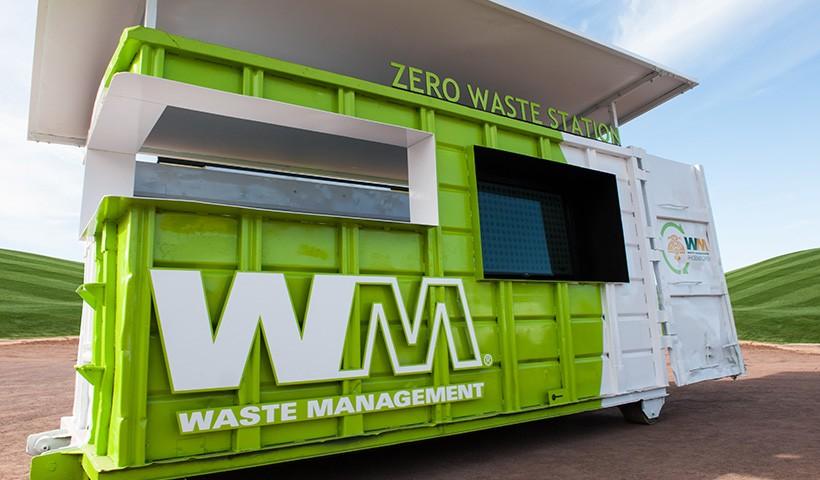

This article is part of a series on “The ROI of Sustainability,” written with the support of MeterHero. MeterHero helps companies and organizations offset their water and energy footprints through consumer engagement. To follow along with the rest of the series, click here.
Waste Management is changing the game when it comes to zero-waste-to-landfill. As the largest environmental solutions provider in North America, serving more than 20 million customers, Waste Management is easily becoming a frontrunner in the environmental sustainability movement.
It’s much bigger than just trash collection. Waste Management is essentially a one-stop shop, providing all inclusive, sustainable disposal solutions to some of the world’s leading businesses and industries. The company’s sustainability services merge consulting and operational expertise to help businesses move forward on their path toward sustainable success.
From working alongside Whole Foods to develop a composting solution that turns food waste into fertilizer, to creating comprehensive recycling programs for colleges and universities, Waste Management seizes every opportunity to turn waste into a resource that benefits our communities and the environment.
The business case for zero waste
Waste Management sustainability services is proof that sustainability pays. Since 2003, the company has delivered more than 157 million in direct cost-savings to customers. The company works across all industries to turn waste, a traditional cost center, into solutions that benefit businesses, their customers and the environment.
The Waste Management team works with companies to strategize and implement sustainability initiatives that reduce cost, improve efficiencies and reduce waste.
To be truly effective, Waste Management goes on-site. Project managers provide onsite and comprehensive programs that offer significant environmental, economic and social returns. Their services range from helping businesses reach zero-waste-to-landfill, to helping companies really understand what happens to their products and packaging throughout every point in the supply chain and tell their sustainability story by tracking business, operational and environmental metrics.
By looking at points of intervention throughout the manufacturing, distribution and recycling processes, Waste Management consultants are able to develop diversion strategies that not only have a positive impact on the planet, but also save money.
“We work right alongside a company’s employees to identify ways of diverting waste upstream," Tom Carpenter, director of growth and development for Waste Management Sustainability Services, told TriplePundit. "Whether it’s saving on operational costs, finding beneficial reuse items or working with manufacturers to close the loop, our consultants are able to find concrete ways to drive savings for customers.”
The company, which originally found its footing in the automotive industry, helps General Motors generate $1 billion in byproducts each year. “It’s all about finding value in every product that is used,” Carpenter explained. “This translates to the bottom-line dollar that we’ve helped companies save every year."
Case study: The Phoenix Open
A great example of how Waste Management has embraced the zero-waste-to-landfill challenge is the Phoenix Open. The Waste Management Phoenix Open is the best-attended golf tournament in the world. It takes place each year in Scottsdale, Arizona, and welcomes more than 500,000 fans annually. The largest golf event across the nation, the total economic impact grossed over $268 million last year.
Since 2013, Waste Management has diverted 100 percent of the tournament waste from landfills. What started off as a goal that many considered impossible turned into an overwhelming success. One hundred percent of all waste went to recycling, composting and waste-to-energy facilities. In simple terms: Seven days, 563,000 fans, zero waste.
The Waste Management team implemented many initiatives to reach their zero-waste goal. First and foremost, no trash cans were permitted at the event. They were replaced by 6,000 recycling and compost bins positioned throughout the course. In addition to this, there were 60 solar-powered compactors, each holding five times that of a traditional bin.
The event featured numerous recycling stations in high-traffic areas which were staffed with “recycling ambassadors” who could answer questions about how to recycle and compost. All power for the tournament was provided by renewable energy sources including solar, wind, geothermal, biogas and biomass. The event also featured a solar-powered hospitality tent where guests could sit back, relax and enjoy a renewable future.
As a part of Waste Management’s “grey water” initiative, drain water was rerouted from the kitchens, laundries and hospitality areas for use in the portable restrooms, saving thousands of gallons of fresh water. The company used four compressed natural gas (CNG) trucks to transport the waste and recycled materials collected during the tournament. These clean-burning CNG trucks emit 95 percent less particulate matter and 90 percent less carbon monoxide than comparable diesel-fueled vehicles.
Additionally, the Waste Management Sustainability Services team worked diligently with vendors to track inventories, inputs and outputs and to source recyclable and compostable materials. Approximately 10,000 pounds of unused food was donated to a local nonprofit, and reusable tote bags were made from used tournament vinyl and mesh banners.
The tournament also featured significant community impact: Through charitable giving, community stakeholder engagement, and the involvement of students and underrepresented groups, the Waste Management Phoenix Open was able to impact the lives of citizens in the surrounding community.
In 2014, over $7 million was generated in charitable donations. Donations were given to local organizations that supplied volunteers to work in the Zero Waste Stations, and free tournament entry was offered to law enforcement, emergency and military personnel.
A future without waste
Waste Management is essentially imagining a future without waste. This is a future where products are designed to generate little to no waste in the first place, everything can be recycled or reused, and organic materials are transformed into energy. Things are no longer simply thrown away, but productively recaptured for new use. What if waste as we know it completely disappeared?
Waste Management is taking giant steps toward this future. The company is committed to developing innovative solutions that are helping communities and organizations achieve their green goals, including zero waste. Across the board, Waste Management is creating new ways of turning waste into opportunity.
“People talk about the triple bottom line of environmentalism,” explained Waste Management CEO David Steiner. “I have a different triple bottom line. I have three little boys, and I want to pass the planet down to them better than we inherited it.”
Image credits: Waste Management
Will Amazon Dash Buttons Kill Sustainable Consumption?
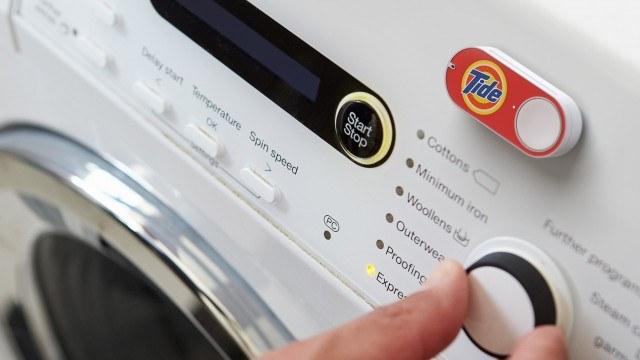

Amazon announced earlier this week that its Dash buttons are available now for all of its Amazon Prime members. For $4.99, members can buy a button connected to a specific brand and use it to reorder products of that brand. The Dash mantra is as simple as the service: Just press and never run out.
Sounds cool, right? Well, I have to admit it is. Wouldn’t it be nice to have a Cottonelle button attached to the shelf where I store the toilet paper at home and click it every time we’re almost out of stock, so the next day a new pack will miraculously wait for me in front of the door? The only thing that could be even cooler is if the shelf could talk directly with Amazon and save me the trouble of clicking a button or the responsibility of checking from time to time to see if we’re out of toilet paper.
But before you start daydreaming of an effortless future, where smart devices make your life so much easier, I’d like you to ask yourself – is this utopia or dystopia? I’d like to make the case here that, when it comes to sustainability, the Amazon Dash gets us one step closer to the latter rather than to the former.
The point I’d like to make is the following: Dash buttons are probably the first iteration of a future we’ll see in a few years, dominated by billions of smart devices using wireless technology to talk to each other and to us, aka the Internet of Things (IoT). Now, while IoT applications like the Dash buttons could make our lives easier, they could also take the thinking, not just the friction, out of our consumption experience as well as replicate the status quo. Both of these effects are unsustainable.
Let me start with the second effect. If the idea behind the buttons is to make reordering easier, it also means that I will probably continue to use in the future the same household brands I’m using today. So, if I use for example Tide laundry detergent, I’ll buy the Tide button and will probably continue to use Tide in the foreseeable future.
This perpetuation of the status quo is unsustainable due to the simple fact that the majority of the household items consumed today are not sustainable. In other words: If today let’s say around 90 percent of what we consume in the house is unsustainable, then with the ‘help’ of the buttons, this unsustainable/sustainable ratio of 90/10 will be kept for years.
The other issue is that, while IoT objects like the Dash button (as well as the Dash barcode scanner) make consumption more seamless, they also make it more thoughtless. Making consumption an automated process -- where eventually our refrigerator, washing machine and bathroom will communicate directly, without any human intervention with Amazon or other retailers to fulfill our needs -- could decrease the chances that we’ll act in a thoughtful way and make sustainable choices. When effortless process becomes the default, then any effort to change our consumption habits (for example, making it more sustainable) becomes even more difficult, and therefore less likely to happen.
What does it mean then?
First, let’s be clear – this is not just about IoT. Dash buttons are just one of many examples of a trend Mary Meeker calls in her 2015 annual trends report ‘Just-in-Time’ products and services enabled by mobiles + sensors + humans, which is about fulfilling our needs seamlessly, conveniently and quickly. Other examples include many on-demand services like Instacart, Shyp, Munchery and, of course, Uber. Second, this trend is not going anywhere – as Mary Meeker writes in her report, consumers’ expectation that they can get what they want with ease and speed will continue to rise.
It also means that it’s time to discuss IoT future scenarios in a more realistic way and understand that with all of its benefits (i.e. enhanced energy efficiency accompanied by productivity gains, reduction in resource use), it could also have negative effects when it comes to advancing sustainability. Therefore, IoT might not necessarily, as Jeremy Rifkin claims, prepare the way for a sustainable circular economy, but it could actually help perpetuate unsustainable consumption patterns.
Last but not least, my guestimation is that the Dash buttons (and probably even more the next generations to follow) could reduce consumers’ agency and increase our dependency on the willingness of mainstream brands like to Tide, Clorox, Bounty, Glad and others to take sustainability more seriously. The bad news is that the annual BSR/GlobeScan State of Sustainable Business Survey shows that sustainable consumption is one of the lowest priorities among current corporate social responsibility (CSR) professionals (only higher than poverty reduction). The good news is that among Net Impact members (i.e. future CSR professionals) this is the No. 1 priority.
The bottom line is that it’s time to start injecting sustainability into the conversation about the Dash buttons, not to make us feel guilty or wonder about the pros and cons of technology, but in order to think about our real challenge – how to meet customers’ expectations for ease and speed in a sustainable way.
Image credit: Amazon
Study: Daughters of Working Mothers Earn More
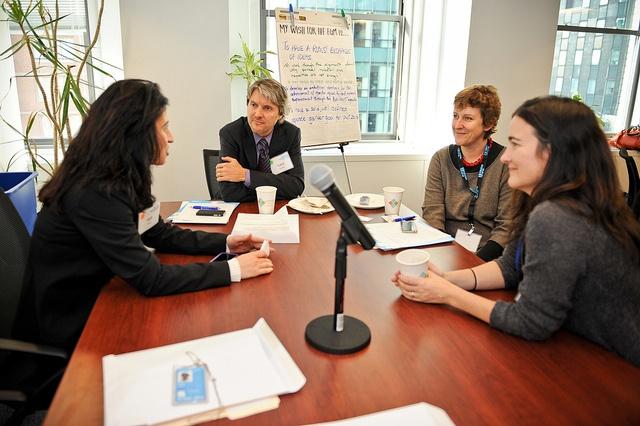

Between two-earner families and single moms, the trend of working mothers has become fully entrenched in our world. This is largely an attempt to keep up with the fact that real wages continue to decline even as executive salaries soar, but there are many other factors as well. There has been a fair amount of hand-wringing through the years, in the so-called “Mommy Wars,” over whether this phenomenon of women no longer staying home to focus primarily on raising children has been detrimental to society at large.
A Pew Research Institute survey, which questioned women themselves on this point, had some interesting results.
Back in 1997, when the survey was first administered, only 19 percent of working mothers thought it was a good thing for society, while 39 percent thought it was a bad thing. Ten years later, those results shifted to where 34 percent thought it was a good thing, which was the same percentage that thought it was a bad thing.
The subject will continue to be debated, though, in many cases, there is really not a lot of choice in the matter. One trend that has emerged recently is the growing popularity of part-time work for mothers with children. Back in 1997, 48 percent of working mothers considered part-time work ideal. By 2007, that number had grown to 60 percent. Stay-at-home mothers in the survey, it should be noted, showed an opposite trend, growing more committed over the same period, where 48 percent said staying home was ideal, up from 39 percent 10 years earlier.
It’s an important question, to be sure -- especially considering the fact that today 75 percent of women with small children do work outside the home.
A recently published Harvard Business School survey throws a surprising new wrinkle into the equation that will likely lift the spirits of working moms. The survey, which was part of a Gender Initiative, questioned some 50,000 adults, aged 18 to 60, from 24 different countries over a 10-year period ending in 2012.
The study found that not only were daughters of working women more likely to be employed themselves, but they were also more likely to earn more. How much more? Here in the U.S., daughters of working women earn 23 percent more than their counterparts whose mothers stayed home. The effect was less pronounced across the 24 nations in the study, where the overall difference was only 6 percent. But over a lifetime of work, even 6 percent can make a difference.
Sons of working mothers actually tended to become more attentive fathers, spending 7.5 hours a week more with their children and 25 minutes more on chores.
Study author Kathleen McGinn told Pew: “What we find is a pattern of results that is very hard to explain if it’s not about gender roles. And by gender roles I mean the way that women and men think about what is appropriate, when you’re male or when you’re female.”
That seems to impact women more in their careers, while it impacts men more in their home lives.
Image credit: U.N. Women: Flickr Creative Commons
Just How Tough Is it to Live On Garment-Worker Pay in Cambodia?
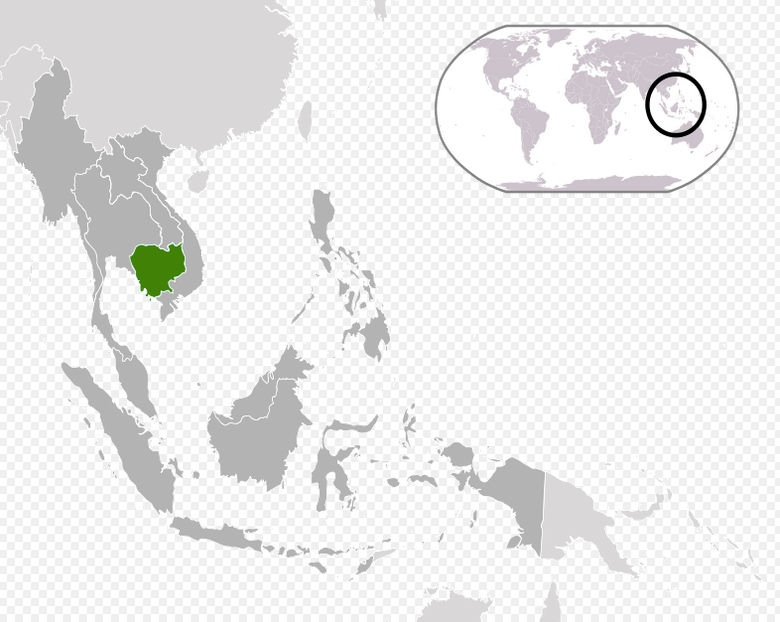

An international team of labor rights groups recently hired a Cambodian research firm to enlighten the government on how much the workers earning nominal wages are spending on living costs. The results, expected to be ready by early September, will give the government reliable data on living costs for the first time, and could trigger a nationwide reform on minimum wage.
The garment industry’s minimum wage — the only sector in the country with a wage floor — is $128 per month, but the industry leaders and researchers are eyeing $177 as the proposed increase to be effective in 2016.
The factories, of course, are fighting the increase in wages, saying an increase in workers’ wages would drive companies outsourcing in Cambodia away to neighboring countries with lower wages like Thailand and Myanmar.
In 2013, the Labor Ministry conducted an independent study on workers’ expenses, but the report was never published. This go-around, the researchers will survey about 700 garment workers across the Southeast Asian country on their current living expenses, local paper Cambodia Daily reports.
The International Labor Organization published a statistics-heavy report that showed detailed numbers on investments, export earnings and wages surrounding the garment sector, but the study didn’t include data on workers’ expenses. Instead, the stats showed the power of inflation and how the hiking costs of living is affecting Cambodia's 15 million residents.
Compared to the U.S., it’s clear to see that average Cambodian workers aren’t flourishing: Consumer prices in the United States are 45.73 percent higher than in Cambodia, yet the U.S. has 693 percent more purchasing power*. Rent prices in the United States are 170.23 percent higher than in Cambodia, but the monthly earnings show that Americans make 1,242 percent more money each month than Cambodians.
When we take a more refined search and delve into each country’s capital cities — Washington, D.C. and Phnom Penh — it’s easy to see the problem. Phnom Penn, where a heap of Cambodia’s garment factories are located, has a relatively high cost of living when compared to the wages being dispensed. The average rent for a one-bedroom apartment in the center of the city costs around $494 while the average monthly salary stands at $307, leaving the average worker out nearly $200 simply for paying rent. In Washington, D.C., rent is $1,865 in a similar location while the monthly wages of $3,862 leaves the average city-goer plenty of spending power.
The cost of living in Phnom Penn is higher than that of Beijing, where every worker is guaranteed a minimum earning of 1,560 yuan, or around $251, a month. It’s also more expensive to live in Cambodia’s capital than Czech Republic’s capital city, Prague, where the minimum wage is $361.
The results of the study for Cambodia are due to come in within the next few months, and the government will likely respond with a new wage once they see how tough it is to live off a measly $128 a month in a country that isn’t particularly cheap.
*All of the statistical data comes from the website Numbeo.com, a website that compares cost of living in every country. The site aggregates user data and user input and claims to be "the biggest Internet database about cost of living." Since the data is based on user input, any information gained from the site could be partially skewed or illegitimate.
Image credit: Wikipedia
A Safety Net for the Sharing Economy
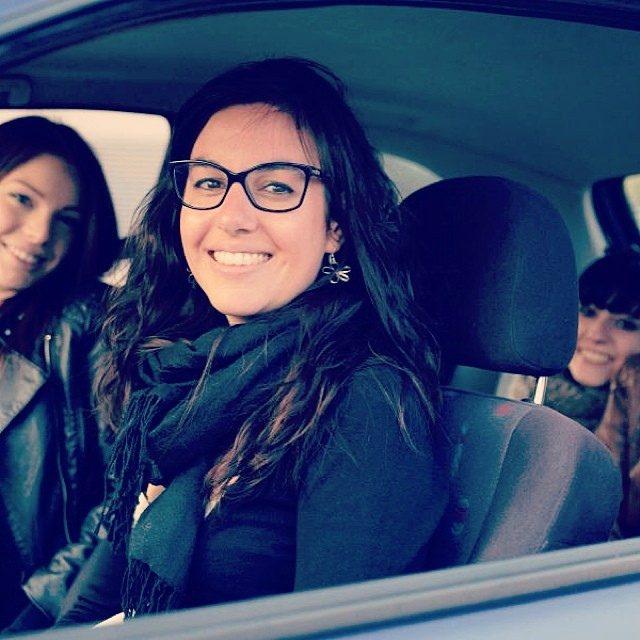

By Angelique Stagg
The sharing economy has hit big time: PwC estimates that revenue could hit $335 billion by 2025. Part of its success can be attributed to the reliance on contractors, who possess ultimate freedom in their job: flexible hours, ownership over the tools of their trade and working at their own pace. However, this freedom has introduced new issues for global employers, including ever-changing safety concerns in various regions.
Many sharing economy companies today (rides, lodging and shipping, to name a few) are thriving: They have harnessed the power of sharing and created an innovative and successful business model that leverages the advantages of a minimalist employee and liability structure. But, just like traditional businesses, the sharing economy needs its workforce to be safe and compliant to be sustainably successful.
Enabling this boom is a workforce comprised primarily of contractors – a business model allowing for worker freedom and flexibility, but a model that also creates a sharing of liability between the contract employees and the corporate owner. This has been the status quo for sharing economy companies for years, and so far it’s working well.
Below are a few tips that the sharing economy should consider discussing with their human resources or environment, health and safety managers (EHS) at their company:
Learn to navigate the sharing economy
Although flexibility is at the heart of the sharing economy, this increasingly popular business model introduces new concerns. Contractors are often responsible for their own assets, training, and personal and customer safety and benefits.
The distinct gap between corporate and contractor responsibility creates a distinct divide between a well-informed and safety-focused company and a potentially naïve contractor workforce. This gap could create a divide in company culture fueling a damaging relationships among contractor, company and customer. The end result can be a segmented workforce lacking an inclusive and effective safety culture. Contractors may feel exposed and at risk by employers forgetting to protect them, and customers may see the end result without understanding the shared responsibilities between the employer and the contractor.
For both the contractor and the company, managing health and safety priorities can be tricky. It may be hard to identify exactly who is responsible for providing health and safety training, conducting risk assessments, and identifying and implementing appropriate control measures to protect workers and customers.
Adding a layer of complexity for fast-growing companies expanding into new countries, compliance regulations for worker safety change from country to country. In much of the developed world, companies have a duty to care for their employees and contractors. Whereas in many developing countries, no such provision exists or if present, are not uniformly enforced.
In Brazil, for example, a company employing a contractor is responsible for the health and well-being of that contractor, while the same contractor working for the same company in Bangladesh may receive little in the form of corporate health and safety training and guidance. Although U.S. companies are beginning to take health and safety in low-risk, high-tech settings more seriously, the corporate focus remains on managing growth and meeting demand.
If health and safety needs are not being addressed at your company while a competitor is using strong health and safety programs as a sales (recruiting?) technique, your company will likely lose out on top talent (like you!). And if safety incidents are regularly happening at your company regardless of a primarily contractor workforce, your company’s brand and reputation will suffer, and customers will shy away – meaning less money for you.
4 tips for building your safety net
1. Be a safety heroWork with your HR or EHS manager to understand what environmental, health and safety guidelines you and they should be following to make sure you’re protected. You may be surprised to learn that many companies reward and recognize employees committed to safety; it’s an integral step toward dissolving the “Us vs. Them” mentality between corporate and contractor. Look into whether or not your company offers an employee-of-the-week program to recognize individuals who are exhibiting positive behaviors. It can’t hurt!
2. Support compliance readiness
Global and domestic expansion are often marques of a sharing economy company’s success and leaders need to be aware of changing compliance regulations across geographies as they expand. If you’re working in a new area or city, it helps to understand what these regulations are before working in new geographies to avoid putting yourself in danger. Having safe and happy regional workers and customers positively impacts the global brand.
3. Advocate for safety training
Beyond normal training or onboarding procedures, ensure you’ve integrated safety into your everyday life. It’s important for contractors to be attuned to potential hazards and liability issues to avoid succumbing to health or safety hazards. Encourage a culture of safety in your company by asking about a formalized training program for all contractors across all geographies – taking into account differing regulatory demands.
4. Address necessities
Identify your needs versus wants as a contractor and as a company as well as customer expectations to deliver the best service you can and can come in the form of training, benefits and other services. Perhaps there’s a formal suggestion box or ask about creating a company-wide survey to identify and prioritize fixes for pain points. By communicating with HR and EHS managers about specific needs, you’ll stay ahead and play a key role in the future success of your company as well as keep your satisfaction high.
Image credit: Flickr/MotorBlog
Angelique Stagg is a global environment, health and safety (EHS) professional with Antea Group with over 20 years of management and leadership experience focused on helping clients enhance their competitive advantage through innovative solutions for environmental, health and safety challenges.
Climate Change Perceptions Vary Between Developed and Developing Countries
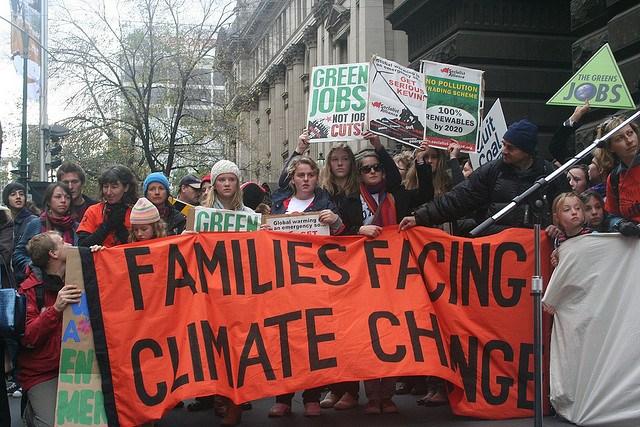

Given the statements on climate change made by many Republican politicians, it is a shock when a Republican presidential candidate states that humans are contributing to climate change. Jeb Bush, a brother to one past president and the son of another, is the candidate who made the statement. His comments highlight the importance of understanding climate change perceptions.
Effective messages about climate change need to focus on public awareness and perceptions that are specific to each country, a recently released study recommends. The study, conducted by researchers at the University of Massachusetts, Amherst, is the largest cross-sectional survey of climate change perceptions. Published in the journal Nature Climate Change, it is the first global assessment of climate change awareness.
What researchers found is that “improving basic education, climate literacy and public understanding of the local dimensions of climate change are vital to public engagement and support for climate action.”
Researchers analyzed data from representative samples of 119 countries collected for the Gallup World Poll conducted in 2007 and 2008. The data included questions about climate change awareness and perceptions of how serious a threat it is to respondents and their families. The responses were analyzed by researchers based on a number of factors, including gender, age, religion, education, geographical location and finances. Then, researchers divided respondents into two categories: aware or unaware of climate change.
“Overall, we find that about 40 percent of adults worldwide have never heard of climate change,” said co-author Anthony Leiserowitz, director of the Yale Project on Climate Change Communication, in a statement. “This rises to more than 65 percent in some developing countries, like Egypt, Bangladesh, and India. There is still a critical need for basic climate literacy in many countries.”
What they found is a “striking” contrast between developed and developing countries. Over 90 percent of those surveyed in North America, Europe and Japan are aware of climate change, but few are aware in developing countries, even though many reportedly observed changes in local weather patterns. As the researchers wrote, “Climate change is a threat to human societies and natural ecosystems, yet public opinion research finds that public awareness and concern vary greatly.”
They also found interesting contrasts between the perceptions of Americans and Chinese. For example, the most important factors for predicting Americans’ climate change awareness is civic engagement (more access to media and higher education), while in China the most important factors are education, urban rather than rural residence, and household income. When it comes to risk perception, the most important predictors in the U.S. are beliefs about human influence on the climate, the perception of whether local temperatures have changed, and attitudes to government involvement in environmental preservation. In China, the most important predictor is dissatisfaction with local air quality.
It would be interesting to see a follow-up study that analyzes the effectiveness of climate change education. Part of combating climate change is convincing the public of the importance of the issue.
Image credit: Flickr/Takver
Building a More Humane World by Choosing Humane Certification


By Robin Ganzert, PhD
A recent TriplePundit piece by Jan Lee outlines some of the challenges society faces in protecting children and animals from cruelty, abuse, neglect and exploitation. This is, in fact, our mission at the American Human Association. However, the writer miscommunicates American Humane Association’s work in helping improve the lives of so many in need. We are not the “police”; rather, we work together with animal lovers, veterinarians, parents, children, farmers and members of the public across the country who share our vision that all animals should be well-treated.
The fact that there are 10 billion animals on farms and ranches in the U.S. means there is a lot of ground to cover. American Humane Association works with small, medium-sized and large farms to improve the well-being of animals in agriculture using the latest science and global research. This is a departure from other groups that take advocacy approaches and use grassroots methods but do not work directly with farms to collaborate on humane improvements. While public advocacy and horrific videos drive media exposure and increased revenue for these groups, American Humane Association works differently.
Instead of trying to force or shame farmers and ranchers into adopting standards that feel good instead of being good, the American Humane Certified program encourages them to do the right thing and join a rigorous, voluntary and completely independent third-party animal welfare audit program, run by the oldest national humane organization in the country – and one that has been behind virtually every major humane protection for children, pets and farm animals since 1877. Our methods have been successful – the program now covers well over 1 billion animals, or 1 in 8 animals on U.S. farms and ranches.
The American Humane Certified program is comprised of 200 humane-treatment standards that are science-based and rigorous. They cover everything from adequate space to air quality, lighting, proper heat and shade, food and water, the ability to express natural behaviors, and other conditions that lead to a better life from birth to table. These standards are set by veterinarians that are experts in their species’ field, and they rely on established humane science noted by the American Veterinary Medical Association. Farms’ compliance with these standards is verified, not by a first- or second-party “eyeball” assessment as with some certification programs, but by a stringent audit conducted by outside, independent, licensed auditors who must also adhere to audit quality standards. By having and ensuring science-based welfare standards, we can measurably improve conditions for farm animals.
Clearly no certification program can stop the actions of the rogue employee who intentionally breaks the rules. Some vegan groups opposed to farming of any kind use such instances to raise awareness, with simultaneous fundraising campaigns. Abuse is never acceptable and in reaction to any information relating to abuse, we investigate and then follow up with the farm involved, and invoke necessary steps that can range from working with the producer to correct problems, to revocation of certification, to expulsion from the program.
Similarly, when it comes to another of our well-known efforts that protects animals – our No Animals Were Harmed program – we are focused on the reality that as long as animals are on the sets of thousands of productions every year, we will be there for them and provide our proactive oversight to ensure their well-being in those unique environments. Our Certified Animal Safety Representatives, many of which are veterinarians, oversee the safety of some 100,000 animal actors each year and combine animal welfare, veterinary and behavioral expertise with knowledge of the filmmaking process to ensure animal actors receive the highest level of care on set. The program is headed by a renowned veterinarian and many of our safety representatives are veterinarians, hold degrees in animal science and animal behavior, and have in-depth knowledge of particular species, set design and set material composition. They work directly with the producers and directors and act as the voice for every animal on set.
We all know that accidents can happen no matter how careful you are, and far from allowing abuse or neglect to occur, we have a remarkably high safety record on set, keeping millions of America’s favorite animal stars safe and well-treated over the past 75 years – everyone from Rin Tin Tin to Flipper and the hero war dog in the recent movie, “Max.”
For 138 years, American Humane Association’s efforts to secure the welfare of animals and well-being of children have been successful because society knows that they must be successful. Yet even with all the progress society has made, there’s still so much work to be done.
Rather than attacking certification programs that raise the standard of living for more than one billion animals every year, those who share the goal of creating a more humane world should work together to bring more animals under these protections.
Image credit: Stock image
Robin Ganzert is president and CEO of American Humane Association
Shopping for Furniture? Check the Labels


By Judy Levin
If you are shopping for furniture, you may already know that there has been a sea-change in the marketplace. Until recently, most foam-filled furniture contained large amounts of toxic flame retardant chemicals, substances that can cause cancer, infertility and other serious health problems. But after years of pressure from the Center for Environmental Health (CEH) and others, in 2013 California changed its rule that promoted the use of these chemicals.
Given the might of the California market, that one change has created major changes in furniture sold nationwide.
New rules for safer furniture
It is now possible to buy new furniture made without toxic flame retardants. CEH's online shopping guides are the most up-to-date resource for buyers, whether you're a major business buying for thousands of employees or a family looking for a new couch. The guides show that 20 office furniture companies and 37 residential furniture companies representing nearly 60 brands are now offering safer furniture made without toxic flame retardants.
While the 2013 California rule (called TB 117-2013) has been in effect for a while, until this year consumers could not be sure about new furniture. That's because the new rule required companies to make products without additional flame retardants, but did not require them to eliminate the chemicals altogether. So, a tag on furniture stating it was "TB 117-2013 compliant" was a good indication that the product was flame-retardant free, but it was not a sure thing.
To protect consumers' right to know about flame retardants in furniture, CEH co-sponsored a California bill (SB 1019) that now requires labels on new furniture to indicate whether products contain flame retardant chemicals. While the state law is only binding in California, the company surveys we conducted to create our guides found that about 75 percent of the companies that are offering products without flame retardants are labeling their furniture nationwide.
While our guides show that many companies have made progress, there is still furniture out there made with flame retardants. We wanted to test the marketplace, so I conducted an unscientific review at Bay Area outlets of three major national retailers. My visits to the three stores showed that these labels are now in use -- at least on some furniture.
Checking the labels
The three stores I visited -- JC Penney, Pottery Barn Kids and Macy's -- showed that retailers are still adjusting to the new rules, some more quickly than others.
My first stop was JC Penney.
Next stop: Pottery Barn Kids
My last and most disappointing stop was Macy's.
I checked more than a dozen couches, chairs and other foam-filled furniture at Macy's, but I couldn't find a single item with the new label disclosing whether or not the furniture contains flame retardants. Even more surprising, I didn't find a single piece that had a new TB 117-2013 tag.
Under California law, companies are required to warn consumers when products can expose us to certain flame retardants that are known to cause cancer. Apparently Macy's furniture contains one or more of these chemicals -- most likely the flame retardant chlorinated Tris. But with other, safer products available from other retailers, Macy's shoppers may want to look elsewhere (to be clear, I shopped at only one Macy's store, so we can't say if this is a company-wide issue or is unique to that location).
The bottom line is that consumers have more information now than ever before about harmful flame retardants in furniture. In response, many furniture companies are making safer products, without these harmful chemicals. Thanks to CEH, you no longer have to shop in the dark when you buy new furniture.
Featured image: Flickr/PoshSurfside.com All other images courtesy of Judy Levin
Judy Levin is the Flame Retardant Campaign Director at the Center for Environmental Health.
The First Malaria Vaccine in History is Now Not-for-Profit
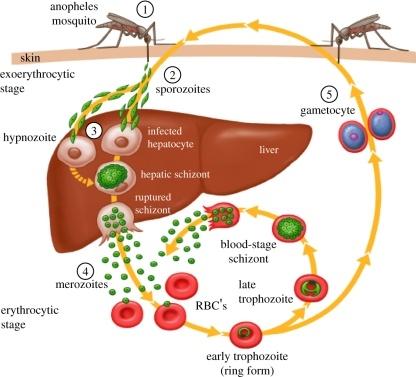

Anyone who has traveled to the jungles of Central America, or the hot, semi-tropical lands of the sub-Sahara, has probably had to deal with the risk of contracting malaria. Some of my earliest memories as a child date back to my introduction to the bitter taste of quinine tablets and the counseling I received from my father, a scientist, of the importance of not missing a single dose. Guatemala's tropics, while not the most dangerous region for malaria infection, harbors its own challenges for life expectancy, and it was my father's work as a nutritionist that gave him a personal understanding into the risks of malaria, and the heartbreaking outcomes of complications from the disease. Quinine, mosquito nets and bug repellant were not absolute protection against malaria, but they were considered essential in Central America's tropical zones.
"Someday they'll figure out how to make a vaccine," I remember him saying wistfully, "but probably not in my lifetime."
His predictions were right. While he didn't have the opportunity to see that accomplishment, he probably would have taken solace in knowing that it would occur a lot sooner than he expected.
Last Monday, the European Union Human Medicine Regulatory Agency announced that the first vaccine against malaria had been approved. Mosquirix or RTS,S from British pharmaceutical company Glaxosmithkline was developed in partnership with the Malaria Vaccine Initiative and a whole host of private and public sponsors. It has been approved for children aged 6 months to 17 months of age, who are particularly at risk for malaria infection in sub-Saharan Africa.
The Bill and Melinda Gates Foundation provided $200 million toward the vaccine's development, which also received clinical development assistance from the Walter Reed Army Hospital. The U.S. Agency for International Development, ExxonMobil Foundation and the Global Health Innovative Technology Fund also chipped in.
The collaborative effort also opens the door for malaria vaccine development that can cover a wider spectrum of ages and needs. The vaccine that was developed targets the most dangerous species of malaria carriers, the Plasmodium falciparum parasite, but has only been shown to be effective in certain age groups.
Disease and related issues like malnutrition kill at least 10 percent of children below the age of 5 in sub-Sahara (amounting to 1 in 9 children in 2012), but developing vaccines that can target the other four parasites that carry malaria may now be a possibility. More than half of the world's population lives in malaria-infested regions, and at least half a million people of all age groups die from malaria or complications related to the disease each year.
Perhaps just as significant an accomplishment is the fact that the vaccine will be essentially not-for-profit. The global collaboration on this vaccine sets a bar that HIV and AIDS research struggled to meet for years: developing a mechanism where a vital medication could be dispensed in an affordable way that would expedite treatment and yet cover the significant costs of research. Galaxosmithkline, which has worked on the vaccine for 28 years, has agreed to offer the malaria vaccine at cost with a 5 percent markup that will be invested back into research for new vaccines.
It isn't unusual for foundations and other nonprofits to invest significantly in medical research, but the potential impact of this breakthrough gives hope for many types of preventative vaccines, not just those that target the transmission of malaria. And that's the beauty of this accomplishment. Parasitic infections that occur as complications to poor nutrition, extreme poverty and environmental conditions may one day be preventable through vaccination. The economic and humanitarian implications of being able to lower child mortality rates with a series of vaccines -- with private-public sponsorship -- benefits everyone. It's a turning point, however preliminary, that one scientist, bent on doing his part to eradicate global malnutrition, would certainly have been proud of.
Image of mosquito: James Gathany/Centers for Disease Control; Speculation of how a vaccine would work (2011);Nigerian children: FMaineICC
Clif Bar Founders Invest in Farm-to-Food Truck


Gary and Kit could have rested on their laurels. Twenty-three years after founding multimillion-dollar energy bar company Clif Bar, Gary gave up the CEO role and the husband-and-wife co-owners became "co-Chief Visionary Officers." Visionary Officer is a great job for the second phase of life, given that it allows much more time for the bike treks through Northern Italy that the duo are known to love.
However, they weren't content to ride off into the sunset. While Clif continues to thrive under CEO Kevin Cleary, with 20 percent of ownership in the company shared by employees through an ESOP, and the five aspirations model to guide them, Kit and Gary were ready for a new challenge: food and wine.
While the Clif Family Winery and Farm was founded in 2004, it has flourished in recent years, in line with Gary and Kit's departure from the day-to-day at Clif Bar. The three-acre farm grows a variety of heirloom veggies including tomatoes, corn and peppers that are used to stock their popular Bruschetteria food truck, which is often found stationed outside their tasting room, Velo Vino. The farm's operations are overseen by Brad Crawford, Kit's brother, who happily experiments with different varietals and growing styles to see what will prove fruitful (pun intended -- they have a pack of fruit trees, too).
In addition to three acres of vegetables, the farm grows 10 acres of grapes: eight of cabernet sauvignon (known to grow well in the region) and two of Zinfandel, Gary's favorite. These and other grapes go into the bottles served at Velo Vino. Wine tasting rooms in Napa county can be somewhat stuffy, with every patron sniffing different and stranger notes in each passing varietal. Velo Vino aims for the opposite: a friendly tasting room where cyclists are at home even if they've just come off a 30-mile ride and have enough street dust to prove it. While the wine itself has mixed reviews, the atmosphere of the tasting room can't be beat.
The whole Clif Family Winery and Farm employs approximately 35 people on a variety of farm-, food- and wine- related projects. The whole thing is operated with the same triple-bottom-line principals that helped make Clif Bar a leader in social and environmental business practices. This company isn't trying to be some kind of Silicon Valley industry disrupter, and it doesn't need to be. While some might pooh-pooh this hobby business, it sure as heck beats golf and the early bird special!
Images credit Jen Boynton